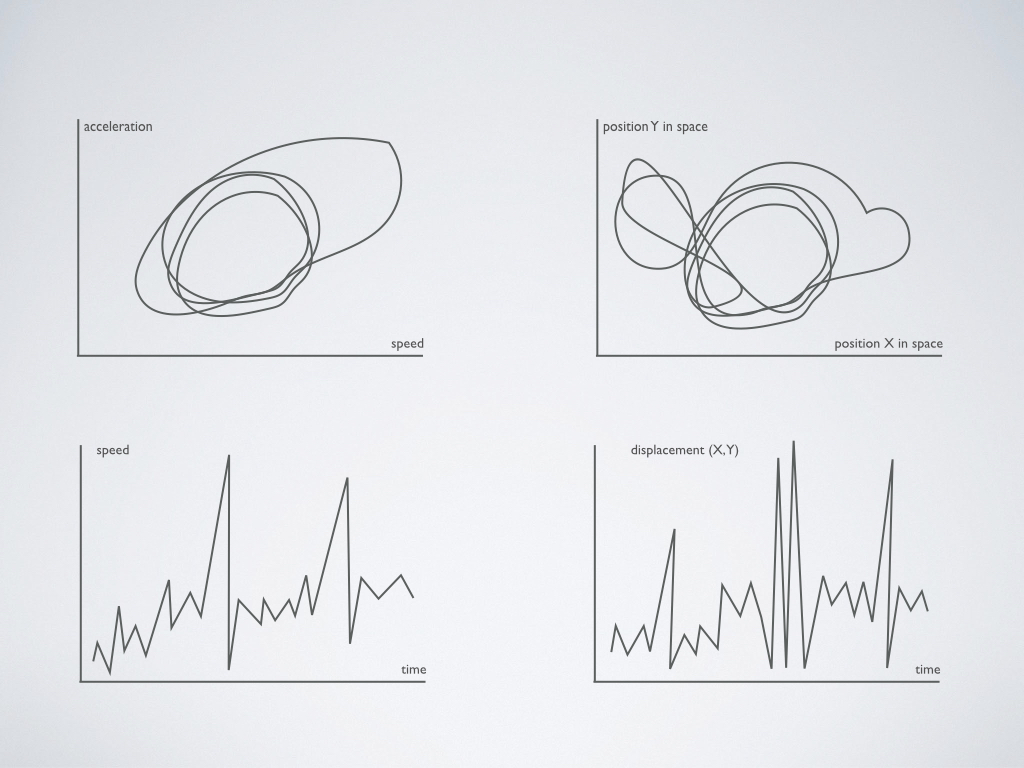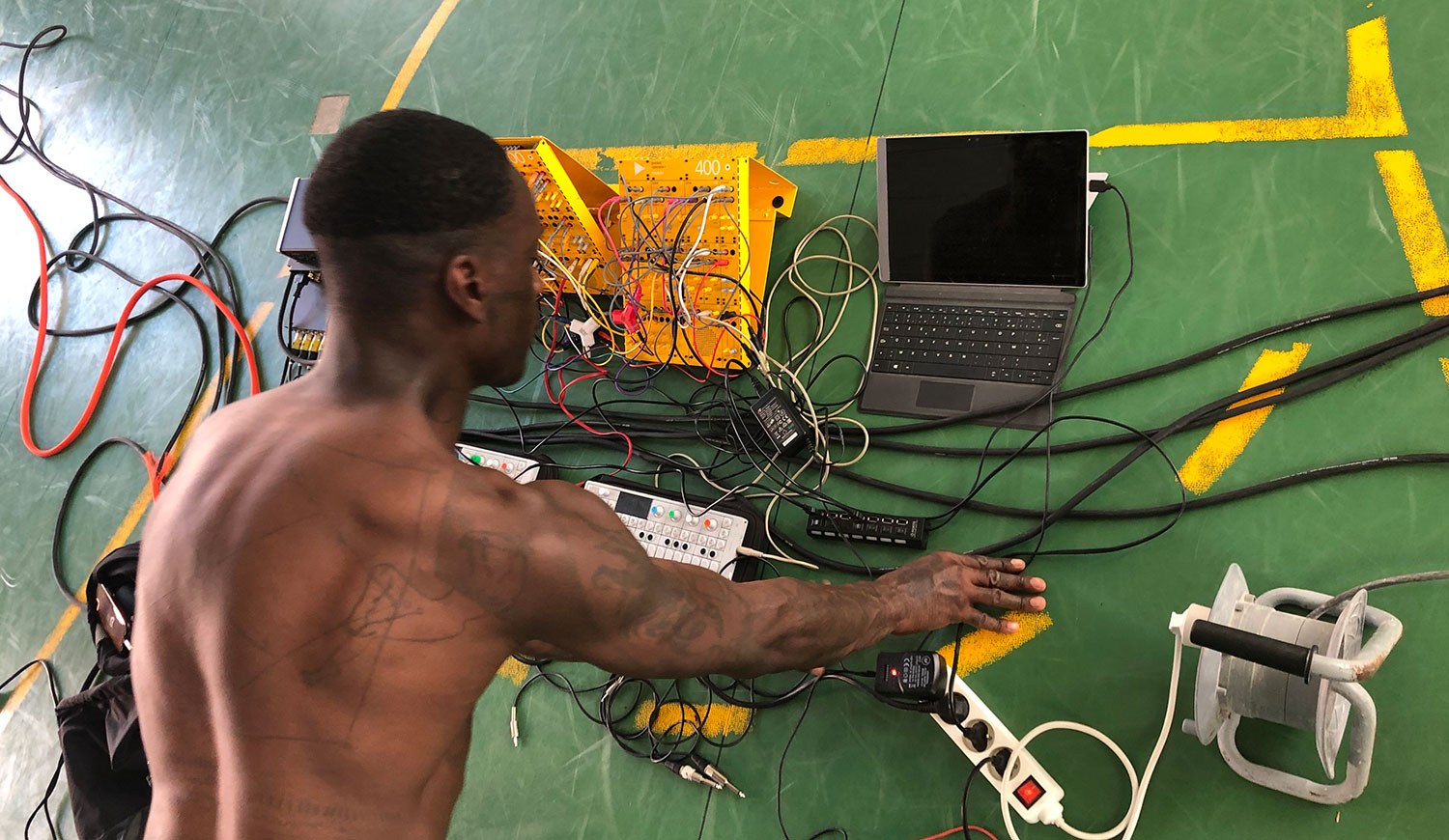Modular Synthesis at V-A-C Venice
How to make music with one’s own and each other bodies? Using the principles from the modular synthesis and music-making we invited the participants to explore oscillatory and wave dynamics in the physical context.
A immersive sound installation by OS/X.Y. with eight speakers was used to create a dynamic environment in a reciprocal feedback loop with the music.
The objective was to create a space and time for a physical exchange, bypassing the stereotypes and cliches of the club culture. Instead, we started the session from introducing several physical interaction principles based on EightOS practice and then using the soundscape to instigate changes in the dynamics of movement and the shifts in the group dynamics.
These changes would follow a so-called chaotic (1/f) itinerancy: where small changes occur relatively often while big changes happen only a few times. In order to define “change” we introduce several systems of coordinates: velocity / acceleration, tension / release, large scale / small scale of movement, etc. The participants are invited to create “strange attractors” in each of these systems, stay in the same area for a certain period of time, then switch to a new area or to a new system of coordinates. (read more on chaotic movement dynamics here)

The spatialized sound serves as a cue for participants to change what they are doing, to be influenced by the outside dynamics. For example, an increase in frequency may produce faster movement, while a shift into another part of the space may instigate a movement in that direction. At the same time, the sound will also depend on the group dynamics — the musicians responding to the movement of people.
This produces a kind of dynamics which looks and feels irregular (there is no specific rhythm or direction) and yet is adaptive to external flow, working with the notion of confluence, assimilation and control. As a result, a certain aesthetics is generated along with a very specific physical / emotional state shared by the group’s participants.
Using Teenage Engineering prototype modular synthesis devices as well as OP-1, 8xMeyer Sound speakers, Motu sound card, Usine Hollyhock software and GRM tool, we created a spatial constellation of speakers in space that would move following the chaotic itinerancy of a wave-like ∞ oscillations.

We also tried to find parallels between the process of live music improvisation, dance, and physical interactions. How the approaches that we use in the music-making could be applied to the aesthetics and intensity of interaction with other bodies and vice versa.
While the session lasted about 2 hours, the video above is a visual/sonic summary of the experience that we shared with all the participants. The soundtrack from the video (6 minutes) is available for download below.
This session was organized and facilitated by V-A-C Zattere.
Special thanks to Joel Valabrega and Polina Filimonova.
Filmed by Matteo Stocco





